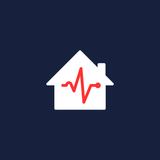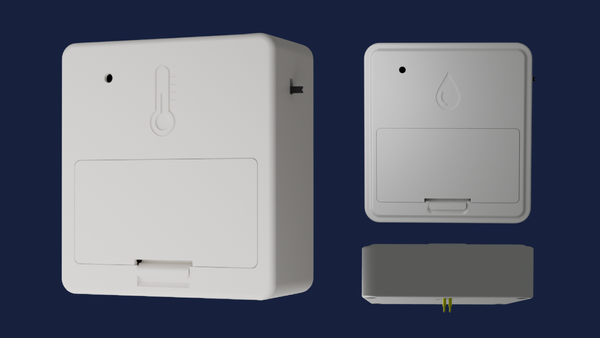Winterizing Your Cabin: A Canadian Owner’s Checklist for Peace of Mind

Cabins are for unwinding—until you picture 5,000 litres of slush dripping through the ceiling. Here’s how to prep your place so you can actually relax after the first snowfall.
1. Water Lines

The fastest route to a five‑figure insurance claim is a burst pipe. Some people keep their cabins heated in the winter so they're able to enjoy a snowy getaway. Still many cabin owners worry about their furnace going out; if they don't have a remote monitoring solution like CabinPulse, they won't find out until their next visit!
If you're turning off your heat, here are a few strategies you can use to make sure your pipes are drained and
- Shut off the main and drain everything. Open taps at both the lowest and highest points so air can chase water out
- Don’t forget hidden traps. Ice makers, outdoor showers, and washing‑machine hoses hold just enough water to expand and split when temperatures drop
- Antifreeze to be sure. A cup in each drain stops P‑traps from cracking. Non‑toxic RV/Marine antifreeze does the trick.
Pro tip: snap a photo of each open valve; it’s a visual cue that everything’s drained and will keep you from second guessing yourself when you’re 200 km away!
2. Have a Heat Strategy

Leaving baseboards or a furnace running low is great if you want to use the place during the winter, or if you have a water tank you don't want to drain. However, it's a gamble if your power blips - which definitely happens!
- Programmable thermostats with battery backup. Even if there's an outage, make sure you have a thermostat with a backup battery so the settings stick. Even better is an old-school analog thermostat where that's not a worry!
- Remote Temperature Monitoring. Devices like CabinPulse will send you a text if the temperature starts to drop - it has a built-in backup battery and uses cellular so it'll work even if the power's out too.
- Old-school safeguard. In hydronic heating systems, replace a portion of the water with a propylene‑glycol antifreeze solution (about one part glycol to two parts water). This lowers the freezing point of the loop, so even if the furnace shuts down during a cold snap the fluid stays liquid for many hours, giving you valuable time to respond before any pipes can burst.
3. Power: Redundancy Beats Regret
The grid at the lake is a different beast than in town. If you've ever shown up to reset clocks on your microwave or oven, you know that it's a problem. Add resilience:
- Test your generator - or think about getting one. A broken generator in January is no better than no generator at all.
- Whole‑home surge protection. Rural outages love to return with voltage spikes. Make sure your place is setup to handle this.
- Battery‑backed monitors. Cellular monitors like CabinPulse sip power and ride through 72‑hour outages, sending status pings even when the cabin’s dark.
If you missed it, our earlier post on checking your cabin remotely explains how low‑data cellular gadgets do the heavy lifting.
4. Moisture & Mold: The Silent Invaders

Mold starts multiplying at relative humidity above 60 % and temperatures above 10 °C.¹ To keep spores sleepy:
- Leave interior doors ajar. Air circulates, pockets don’t fester.
- Desiccant buckets in crawl spaces. Swap them annually.
- Vent the roof. Clear soffit vents and ridge vents so warm air can escape rather than condense on the rafters.
5. Critter & Structure Check
- Seal gaps bigger than a dime. Mice and bats find a way otherwise. It's easier to keep them out than to get rid of them once they've made a themselves at home!
- Trim trees back three metres. Falling branches are a major cause of expensive cabin repairs.
- Inspect the roof edge. Missing shingles can happen - it's better to patch it up now than suffer the damage of a leaky roof.
The Remote Safety Net

Even with every checklist box ticked, weather has a habit of freelancing. A low‑data cellular monitor like CabinPulse watches:
- Temperature (before lines freeze)
- Power loss (know when to call the neighbour)
- Humidity spikes (sign of a leak)
- Smoke‑alarm pattern (alert if no one’s around)
Because the cellular connectivity lives inside the device and the battery rides through multi‑day outages, you still receive alerts when WiFi‑based gadgets would be unreachable.
Final Sweep Before You Lock the Door
- Unplug appliances (phantom loads cost money and can arc).
- Close blinds halfway to deter peek‑ins but allow solar warmth.
- Photograph every room, the thermostat and anything else you might second guess yourself on (plus, insurance loves documentation!)
- Hand a spare key to the one neighbour who lives at the lake year-round.
Winter may be long, but it shouldn’t be stressful. Run the checklist, set up your alerts, and let the cabin hibernate. Soon enough it'll be spring!
¹ Government of Canada, Healthy Indoor Environments (humidity guidelines).




